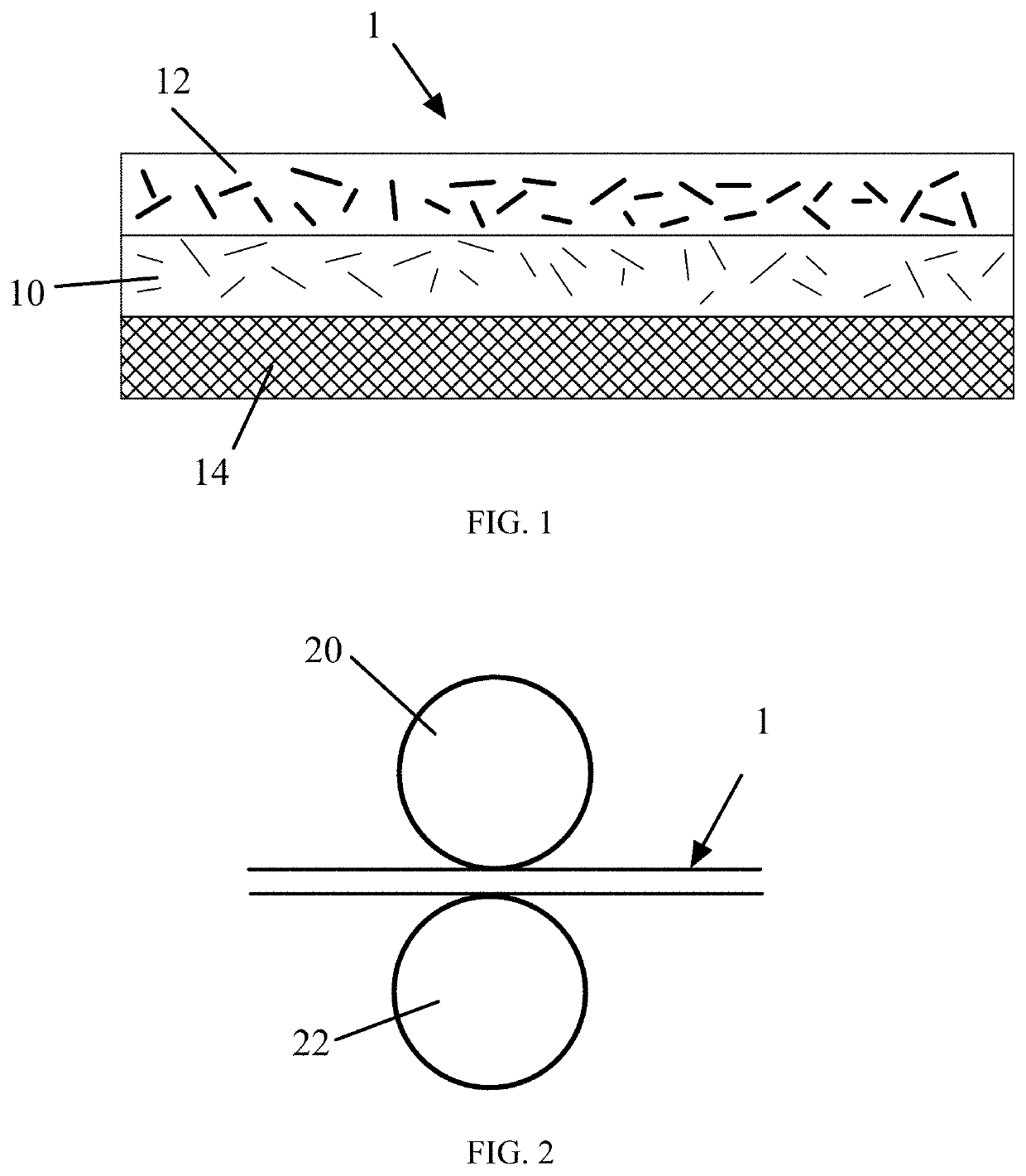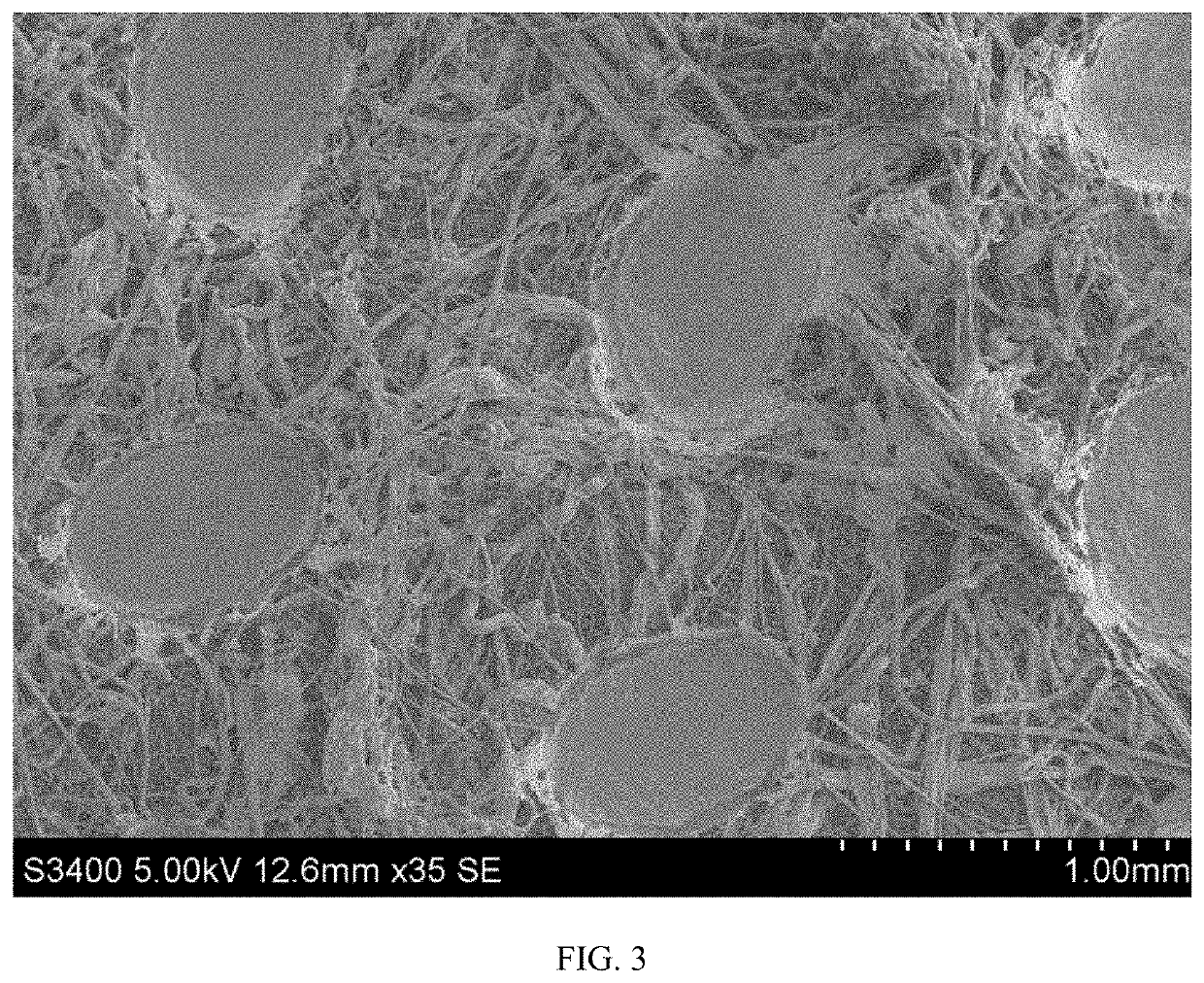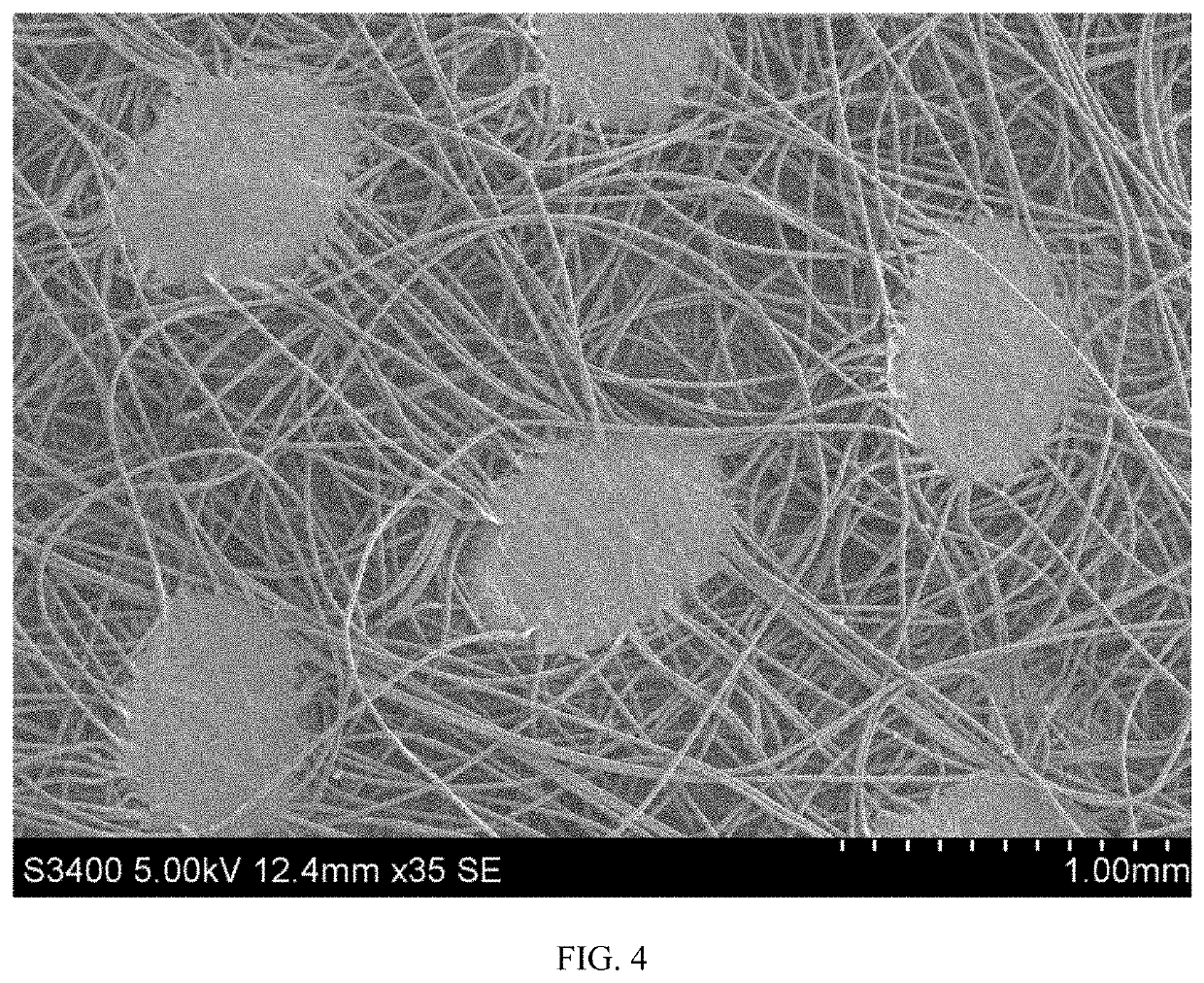Abrasive wipe
a technology of abrasive webs and wipes, which is applied in the direction of carpet cleaners, cleaning equipments, layered products, etc., can solve the problems of step process driving up the cost of products, and the strength or durability of wipe products made from pure meltblown constructions, so as to achieve the effect of enhancing strength and durability
- Summary
- Abstract
- Description
- Claims
- Application Information
AI Technical Summary
Benefits of technology
Problems solved by technology
Method used
Image
Examples
example 1 (
[0038]A spunbond base layer was first laid down using a Reicofil machine. This layer was made with polypropylene resin with a melt flow rate of 35 g / 10 min at 230° C. and titanium dioxide as an optical brightener. The addition rate of this optical brightener (Standridge SCC-20790, available from Standridge Color Corporation of Georgia, USA) was 1% of the beam throughput, but this additive was not necessary for the performance of the material. This spunbond layer made up approximately 16.9 gsm of the final product (50%). The mean fiber diameter of the spunbond base layer was measured to be 17.85 microns, with a standard deviation of 0.964.
[0039]A fine meltblown layer was then applied using a Reifenhauser meltblowing machine. This layer was comprised of a pure polypropylene meltblown resin with a melt flow rate of 1550 g / 10 min at 230° C., and made up approximately 7.3 gsm of the final product (22%). The mean fiber diameter of the meltblown layer was measured to...
example 2 (
50 Gsm Hydrophilic Abrasive Wipe)
[0043]A spunbond base layer was first laid down using a Reicofil machine. This layer was made with polypropylene resin with a melt flow rate of 35 g / 10 min at 230° C. and titanium dioxide as an optical brightener. In order to impart hydrophilic properties to the material, a masterbatch was also added that rendered the fibers hydrophilic (Techmer Tecshurf® 15560, available from Techmer PM of Clinton, Tenn., USA), and this additive made up 3% of the beam's throughput. The addition rate of the optical brightener (Standridge SCC-20790) was 1% of the beam throughput, but this additive was not necessary for the performance of the material. Due to the weight of this product, another additive was used in order to bond all of the layers together. This additive (ExxonMobil Vistamaxx™ 7020BF, available from Exxon Mobile Corporation) was a propylene and ethylene copolymer with a melt flow rate of 20 g / 10 min and made up 10% of the beam's throughput. The copolyme...
example 3 (
60 Gsm Hydrophilic Abrasive Wipe)
[0047]A spunbond base layer was first laid down using a Reicofil machine. This layer was made with polypropylene resin with a melt flow rate of 35 g / 10 min at 230° C. and titanium dioxide as an optical brightener. In order to impart hydrophilic properties to the material, a masterbatch was also added that rendered the fibers hydrophilic (Techmer Techurf® 15560), and this additive made up 3% of the beam's throughput. The addition rate of the optical brightener (Standridge SCC-20790) was 1% of the beam throughput, but this additive was not necessary for the performance of the material. Due to the weight of this product, another additive was used in order to bond all of the layers together. This additive (ExxonMobil Vistamaxx™ 7020BF) was a propylene and ethylene copolymer with a melt flow rate of 20 g / 10 min and made up 10% of the beam's throughput. The copolymer additive with its lower melting point helped to lower the melting point of the spunbond la...
PUM
| Property | Measurement | Unit |
|---|---|---|
| elongation | aaaaa | aaaaa |
| diameter | aaaaa | aaaaa |
| diameter | aaaaa | aaaaa |
Abstract
Description
Claims
Application Information
 Login to View More
Login to View More - R&D
- Intellectual Property
- Life Sciences
- Materials
- Tech Scout
- Unparalleled Data Quality
- Higher Quality Content
- 60% Fewer Hallucinations
Browse by: Latest US Patents, China's latest patents, Technical Efficacy Thesaurus, Application Domain, Technology Topic, Popular Technical Reports.
© 2025 PatSnap. All rights reserved.Legal|Privacy policy|Modern Slavery Act Transparency Statement|Sitemap|About US| Contact US: help@patsnap.com



